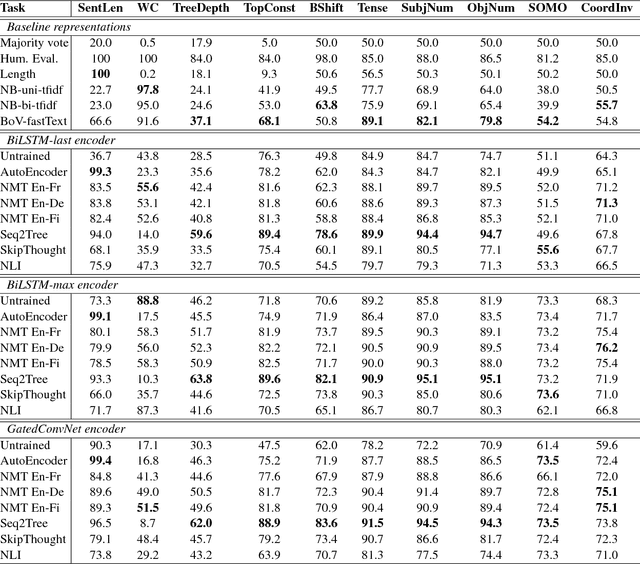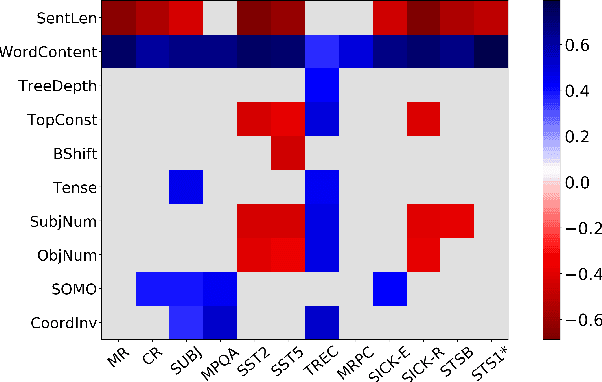What you can cram into a single vector: Probing sentence embeddings for linguistic properties
Paper and Code
Jul 08, 2018



Although much effort has recently been devoted to training high-quality sentence embeddings, we still have a poor understanding of what they are capturing. "Downstream" tasks, often based on sentence classification, are commonly used to evaluate the quality of sentence representations. The complexity of the tasks makes it however difficult to infer what kind of information is present in the representations. We introduce here 10 probing tasks designed to capture simple linguistic features of sentences, and we use them to study embeddings generated by three different encoders trained in eight distinct ways, uncovering intriguing properties of both encoders and training methods.
* ACL 2018
 Add to Chrome
Add to Chrome Add to Firefox
Add to Firefox Add to Edge
Add to Edge